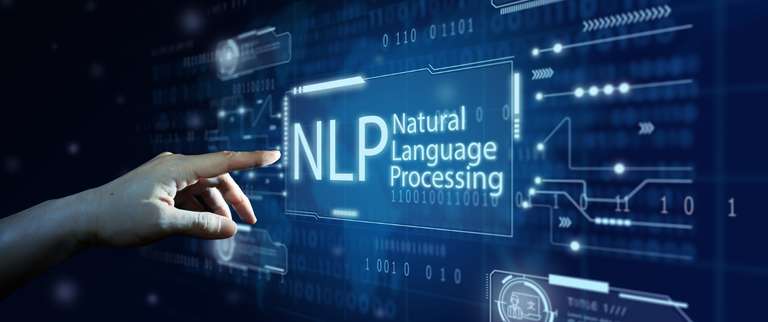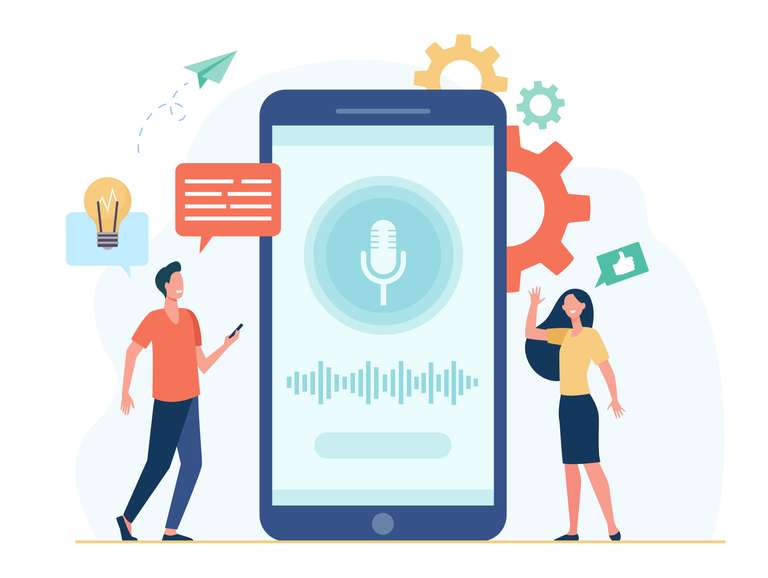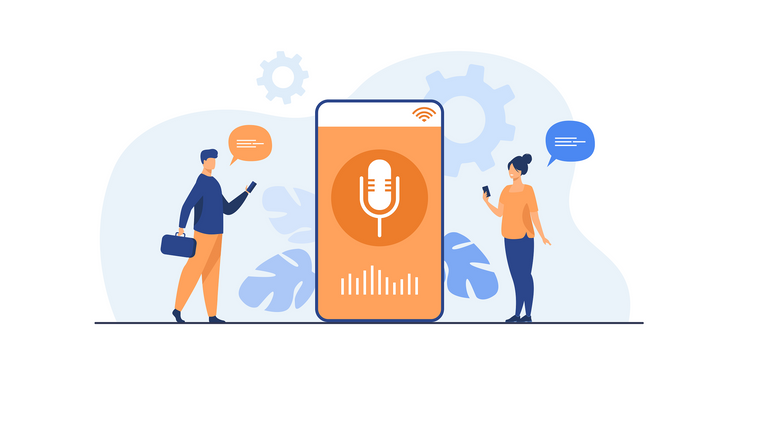How Speech Recognition is Changing Language Learning

Language assimilation, for centuries, has been an enchanting odyssey. For many, it's not merely about learning new words or grammar, but rather, it's about bridging cultures, broadening horizons, and forging global connections. However, as fascinating as it might be, it has always been fraught with challenges from grasping the correct pronunciation to understanding nuanced meanings, language learners often face a steep learning curve.
In the face of these challenges, we've seen a silver lining with the advent of technology. Innovative solutions have transformed the traditional ways of language assimilation, making it more interactive, effective, and, dare we say, fun! And amongst these emerging technologies, one stands out, adding a new dimension to how we learn languages speech recognition.
Speech recognition, or voice recognition, is a technology that enables machines to convert spoken language into written text. It is an incredible blend of linguistics, computer science, and artificial intelligence. In language assimilation, it is steadily becoming an invaluable tool, helping individuals not just learn but use and interact with the language.
In this article, we will embark on a journey exploring the transformative role of speech recognition in language assimilation. We will delve into how this technology is assisting learners in developing their speaking and listening skills, contributing to a more holistic and immersive experience. So, buckle up, and let's dive in!
Table of Contents
How Does Speech Recognition Work in Language Learning?
Speech recognition technology might seem like magic, converting spoken words and phrases into written text in an instant. However, the mechanism behind it is an intricate marriage of advanced computing and linguistic principles. Two significant components drive this: natural language processing (NLP) and machine learning with deep neural networks.
Natural Language Processing
Imagine trying to teach a computer to understand human language. It sounds like a herculean task, doesn't it? After all, human language is not merely a collection of words. It's a rich tapestry of emotions, idioms, cultural nuances, and syntax. That's where NLP comes into play.
NLP is an area of AI that enables computers to analyze, understand, and generate human language. It decodes the complexities of human speech, breaking it down into simpler, understandable units. In the realm of speech recognition, NLP acts like a detective, taking audio input and splitting it into segments, identifying words, analyzing the grammar, and ultimately understanding the overall context. It's like the Rosetta Stone for computers, bridging the gap between human speech and machine understanding.
Machine Learning and Deep Neural Networks
While NLP allows machines to understand language, ML equips them with the power to learn and evolve, much like a human brain. Machine learning involves algorithms that can learn from and make data-based decisions. It brings continuous improvement to speech recognition, enhancing its capabilities with each interaction.
Deep neural networks, as the name suggests, are computing systems inspired by the human brain's neural network. They allow machines to learn from vast amounts of data, identify patterns, and make decisions. In the case of speech recognition, deep neural networks assist in understanding various accents, dialects, and speech patterns, thereby refining the system's performance over time.
Also Read : Revolutionizing Television Commercials with AI Voiceovers
Benefits of Speech Recognition Language Learning
As speech recognition technology integrates into language assimilation platforms, it brings along a plethora of benefits, adding a fresh and exciting twist to the learning process. From enhancing pronunciation practice to providing real-time feedback, speech recognition software is making learning a new language more accessible and enjoyable. Let's delve into these benefits one by one.
Enhanced Pronunciation Practice
Mastering a new language begins with the crucial task of understanding and pronouncing words correctly. This is where speech recognition technology, coupled with the expertise of a native speaker, becomes an invaluable aid. By harnessing voice recognition tools, learners can engage in interactive pronunciation practice. These tools actively listen, analyze speech patterns, and provide real-time corrections, allowing a language learner to repeat and refine their pronunciation with the guidance of native speakers.
Improved Listening Language Skills
To converse in a foreign language, one must not only be able to speak but also comprehend what is being said. Speech recognition aids in developing these crucial communication and listening skills. By interacting with speech recognition tools, learners get accustomed to a variety of accents and speech speeds, improving their ability to understand spoken language in different contexts.
Increased Speaking Fluency
Speech recognition technology encourages learners to speak more, fostering increased fluency. With practice, learners develop a better command of the language, improving their sentence construction and conversation flow. As learners gain confidence through regular speaking practice, they gradually become more at ease with expressing themselves in the target language, resulting in heightened fluency and greater self-assurance.
Interactive Learning Experience
Learning a language can sometimes feel daunting, but not when you have speech recognition technology by your side. Language assimilation apps powered by this technology make the process fun and interactive, reducing the boredom of rote learning. By integrating real-time corrections and guidance, the technology creates an engaging learning environment where learners can actively engage with the language at their own pace. Speaking practice is seamlessly incorporated into the interactive experience, enhancing language skills and overall proficiency.
Real-Time Feedback on Pronunciation
The ability to provide real-time feedback is arguably one of the most significant benefits of speech recognition technology. As learners practice speaking, the technology offers instant feedback, helping them identify and correct their mistakes. This immediate feedback and corrective mechanism accelerates the learning process, enabling learners to perfect their pronunciation and accent much faster than traditional methods.
Challenges and Limitations of Speech Recognition for Language Learning
Despite the significant strides made in the field of speech recognition, it is not without its fair share of challenges. As with any technology, it carries certain limitations that can impact its efficacy in language assimilation. Let's examine some of these potential stumbling blocks.
Accent and Dialect Recognition
Every language is a vibrant collage of various accents and dialects. However, accurately recognizing and comprehending these nuances can be a hurdle for speech recognition technology. While significant advancements have been made, the technology may still struggle to decipher heavy accents or regional dialects accurately. This limitation can potentially affect the quality and progress of language assimilation, especially for learners hailing from diverse linguistic backgrounds.
Contextual Understanding
Human language is intricately laced with context and emotion. Often, the meaning of a sentence changes entirely based on the tone, pitch, or context. While natural language processing has come a long way in understanding these subtleties, speech recognition technology may still stumble when it comes to accurately deciphering contextual meanings or detecting sarcasm, humor, or other emotional undertones. This complexity might create challenges for learners trying to understand the nuances of a language.
Privacy and Data Security Concerns
In the era of digital learning, privacy, and data security concerns are paramount. Speech recognition technology relies heavily on user data to enhance its accuracy and effectiveness. However, this raises questions about data storage, privacy, and security. While companies usually employ measures to safeguard user data, concerns about misuse or data breaches can't be entirely ruled out. It's essential for language assimilation platforms to address these concerns, ensuring a safe and secure learning environment.
Future Prospects of Speech Recognition in Language Learning
The future of speech recognition in language assimilation shines bright, bursting with possibilities and opportunities. With continued advancements, this technology promises to revolutionize the language learning experience further, overcoming the current challenges and opening up new avenues for language learners everywhere.
Continuous Improvement in Accuracy
With continuous advancements in artificial intelligence, we can expect significant improvements in speech recognition accuracy. Developers are constantly refining algorithms, enhancing their ability to understand different accents, dialects, and contextual nuances. These improvements will make speech recognition more efficient and reliable, leading to a more effective and personalized language assimilation experience.
Integration with Virtual Reality and Augmented Reality
Imagine practicing your French while taking a virtual stroll down the Champs-Elysées or learning Japanese while exploring the bustling streets of Tokyo from your living room. The integration of speech recognition with virtual reality and augmented reality holds the potential to create such immersive learning experiences, making language assimilation more realistic and engaging.
Multilingual Support and Diverse Language Options
We anticipate the future will bring support for more languages, dialects, and accents, promoting inclusivity in language assimilation. With multilingual support in language apps, learners from diverse linguistic backgrounds will have the opportunity to learn a new language with more comfort and confidence.
Summary
In conclusion, the future of speech recognition in language learning holds immense promise. As we stand at the crossroads of this linguistic revolution, we can expect more advancements to make language assimilation more engaging, interactive, and efficient.
So, here's to the future, where technology and language learning coalesce into a dynamic partnership, creating a world where language barriers crumble and global connections flourish. Keep exploring, keep writing, keep learning, and embrace the exciting times that lie ahead!
FAQs
Are speech recognition applications suitable for learners with different accents?
Yes, speech recognition applications are indeed suitable for learners with different accents. While the technology might initially struggle with heavy accents or dialects, advancements in machine learning and artificial intelligence are improving its ability to understand and adapt to diverse accents.
How does speech recognition technology help improve pronunciation in language learning?
Speech recognition technology is like having a patient, ever-present tutor ready to assist with pronunciation practice. Converting spoken words into written text allows learners to see any discrepancies between their pronunciation and the correct one. In real-time, learners can correct their pronunciation errors and practice until they get it right. It is an interactive process that enhances learners' understanding of how words should sound, thereby improving their pronunciation over time.
How accurate is speech recognition technology in language learning?
The accuracy of speech recognition technology in language assimilation is continuously improving. While it is highly effective and accurate for standard and widely-spoken languages and accents, it can sometimes struggle with heavy accents, regional dialects, or less commonly spoken languages. However, with constant advancements in artificial intelligence, machine learning, and neural networks, the technology is becoming increasingly adept at understanding and interpreting diverse languages and accents.



